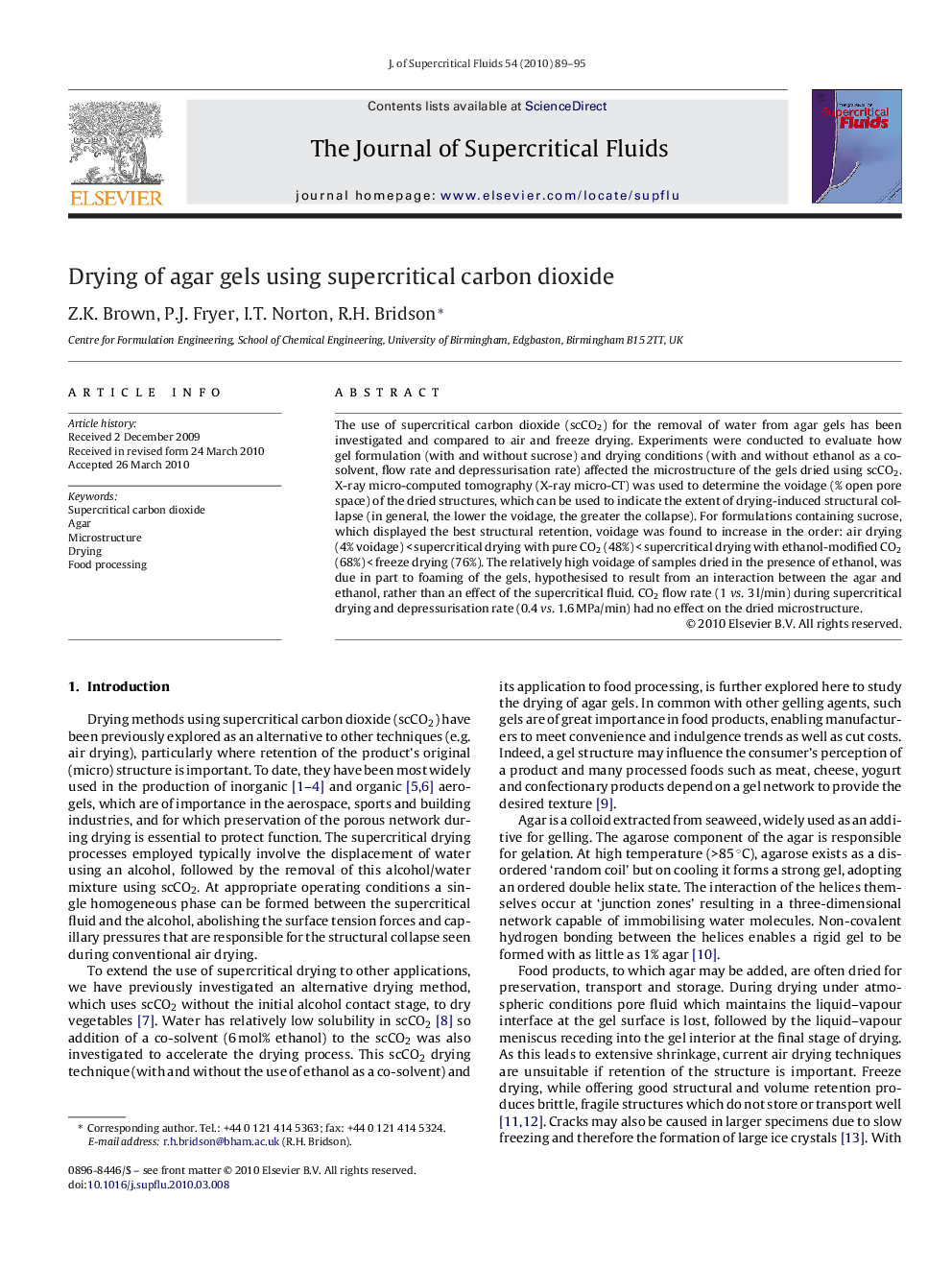| Article ID | Journal | Published Year | Pages | File Type |
|---|---|---|---|---|
| 231583 | The Journal of Supercritical Fluids | 2010 | 7 Pages |
The use of supercritical carbon dioxide (scCO2) for the removal of water from agar gels has been investigated and compared to air and freeze drying. Experiments were conducted to evaluate how gel formulation (with and without sucrose) and drying conditions (with and without ethanol as a co-solvent, flow rate and depressurisation rate) affected the microstructure of the gels dried using scCO2. X-ray micro-computed tomography (X-ray micro-CT) was used to determine the voidage (% open pore space) of the dried structures, which can be used to indicate the extent of drying-induced structural collapse (in general, the lower the voidage, the greater the collapse). For formulations containing sucrose, which displayed the best structural retention, voidage was found to increase in the order: air drying (4% voidage) < supercritical drying with pure CO2 (48%) < supercritical drying with ethanol-modified CO2 (68%) < freeze drying (76%). The relatively high voidage of samples dried in the presence of ethanol, was due in part to foaming of the gels, hypothesised to result from an interaction between the agar and ethanol, rather than an effect of the supercritical fluid. CO2 flow rate (1 vs. 3 l/min) during supercritical drying and depressurisation rate (0.4 vs. 1.6 MPa/min) had no effect on the dried microstructure.
Graphical abstractFigure optionsDownload full-size imageDownload as PowerPoint slide
